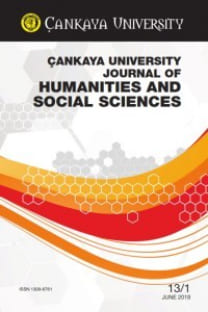Sessizleştirilmiş Öteki’ne Ses Verme Çabası: Cyprian Norwid and Barbara Sadowska Çevirisi Üzerine
Şiir çevirisi, sessizleştirme, Öteki, Paul Ricoeur, Seamus Heaney, Cyprian Norwid, Barbara Sadowska
The Endless Story of Giving Voice to the Other: Translating Poets Cyprian Norwid and Barbara Sadowska
Poetry translation, silencing, the Other, Paul Ricoeur, Seamus Heaney, Cyprian Norwid, Barbara Sadowska,
___
- Alcuin. “Epigrammata et aenigmata.” Beati Flacci Albini sev Alcuini Opera, vol. 2, Literis Joannis Michaelis Englerth, 1777. Barthes, Roland. “Arcimboldo ou Rhétoriquer et Magicien.” L’Obvie et l’Obtus. Essaus critiques III, 1982. Cahill, Thomas. “How the Irish Saved Civilisation.” The Untold Story of Ireland’s Heroic Role from the Fall of Rome to the Rise of Medieval Europe, Hodder and Stoughton, 1995. Czerniawski, Adam. “The Burning Forest.” Modern Polish Poetry, translated and edited by Adam Czerniawski, Bloodaxe Books, 1988. ——. “Translating Poetry: Theory and Practice”, translated by Zbigniew Suszczyński. Cyprian Kamil NORWID: Poems, Wydawnictwo Literacke, 1986. DeSales, Harrison. “Sylvia Plath: The Star’s Dark Address.” The End of the Mind. The Edge of the intelligible in Hardy, Stevens, Larkin, Plath and Gluck, Routledge, 2005. Eliot, Thomas Stearns. “East Coker.” Poezje wybrane, Instytut Wydawniczy PAX, 1988. Eliot, T. S. “Tradition and the Individual talent.” Selected Essays by T. S. Eliot, Faber and Faber, 1934. Fromm, Erich. “Afterwords.” 1984, by George Orwell, Signet Classics, 1969. Gadamer, Hans Georg. “The Western View of the Inner Experience of Time and the Limits of Thought.” At the Crossroad of Cultures. Time and the Philosophies, UNESCO, 1977. Heaney, Seamus. “Preoccupations.” Selected prose 1968-1978, Faber and Faber, 1980. Miłosz, Czesław Miłosz. “Bringing a Great Poet back to Life.” The New York Review of Books, February 1996. Molino, Michael R. “Questioning Tradition, Language and Myth.” The Poetry of Seamus Heaney, The Catholic University of America Press, 1994. Moody, T. W., and F. X. Martin., editors. The Course of Irish History. The Mercier Press, 1984. Norwid, Cyprian. “Promethidion.” Dzieła Wszystkie IV. Poematy, vol. 2, edited by Stefan Sawicki and Piotr Chlebowski, Instytut Badań nad Twórczością Cypriana Norwida KUL, 2011. Ricoeur, Paul. The Conflict of Interpretations, edited by Don Ihde, North Western University Press, 1974. ——. Interpretation Theory: Discourse and the Surplus of Meaning, Texas Christian University Press, 1976. Sadowska, Barbara. Nad ogniem. Państwowy Instytut Wydawniczy, 1965. ——. Wiersze ostatnie, Oficyna Poetów i Malarzy, 1986. ——. Zerwane druty. Iskry, 1957. The Bible, Gen. I. Revised Standard Version of the Old Testament. 1952. Vendler, Helen. “Reconstructing the Colossus.” Coming of Age as a Poet: Milton, Keats, Eliot, Plath, Harvard University Press, 2003.
- ISSN: 1309-6761
- Yayın Aralığı: Yılda 2 Sayı
- Başlangıç: 2004
- Yayıncı: Çankaya Üniversitesi
Şiirsel Düzyazı Çevirisine Yaklaşımlar
Philip GLOVER, Adwaa Sabah Shukur AL-TEKREETİ
Metinlerarası Yaratıcılık Açısından Çeviri: Fransızca ve Türkçede La Galatea Üzerine Bir Çalışma
Çevrimiçi İltifatlar Aracılığı ile Kültür Etkileşimi
İngilizce ve Fransızca Eleştirel Söylem Çözümlemesi Öğretimi
The Return of England in English Literature
The Return of England in English Literature, by Michael Gardiner
Qurratulaen LİAQAT, Asia MUKHTAR
Sessizleştirilmiş Öteki’ne Ses Verme Çabası: Cyprian Norwid and Barbara Sadowska Çevirisi Üzerine
Sözlü Anlatı Çevirisi: Kaavad ve Phad Ekseninde Görsel Anlatı
